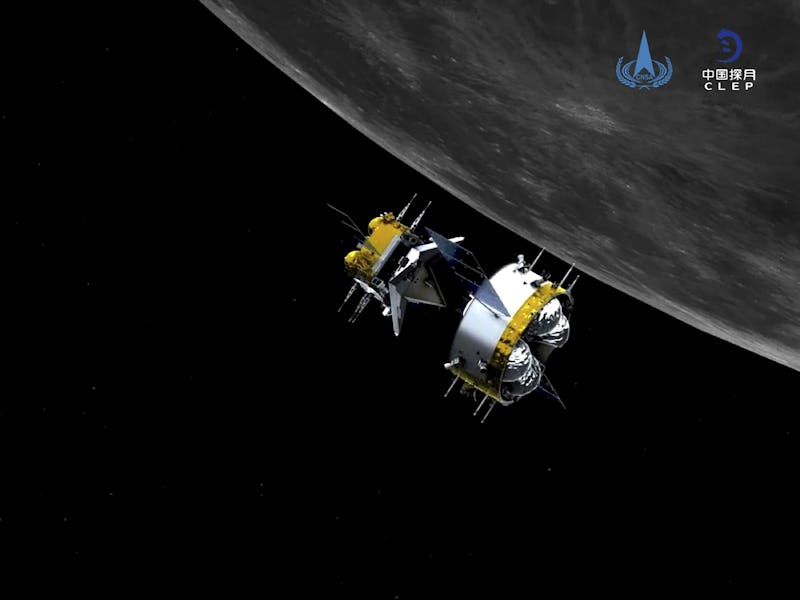Landmark mission brings Moon samples to Earth for the first time in 4 decades
We've waited 40 years for this.

On Wednesday, Earth received a very special delivery.
Chang'e-5, a lunar lander sent by China in November to snag a piece of the Moon and return it to Earth, had succeeded in its historic mission.
The sample return capsule, retrieved from Siziwang Banner in Mongolia, China, contains 2 kilograms of lunar material — the first lunar rock sample to make it to Earth for study in more than 40 years. Considering how rich the few fragments of the Moon on Earth have proven to science — collected during the 1960s and 70s — the potential to unlock new secrets about our natural satellite and constant celestial companion cannot be understated.
Despite the long wait for a lunar sample return mission, this was an impressively efficient effort. Launched into space on November 23, China's Chang'e-5 craft entered lunar orbit a mere 112 hours later.
The spacecraft landed on the Moon on December 1, arriving near Mons Rümker, a raised region of the Moon's near side formed by past volcanic activity in Oceanus Procellarum.
Within hours, Chang'e-5 drilled two meters deep into the lunar regolith to retrieve samples of the Moon's rock, before collecting samples from the surface of the Moon. The last lunar sample return mission was the then Soviet Union's Luna 24 probe in 1976.
Scientists believe the area the samples come from is millions of years younger than the area from which the samples brought back by the Apollo mission were taken. If tests prove it is indeed younger material, then it would confirm the Moon experienced late-stage volcanic activity.
Shortly after collecting the samples, the Chang'e spacecraft acted as a launch pad for an ascent vehicle. This vehicle delivered the samples to an orbiter circling the Moon, which in turn carried the precious cargo back to Earth. The sample return capsule touched down on Earth Wednesday afternoon Eastern time.
Watch the coverage of the recovery here:
Chang'e-5 also conducted a number of experiments itself while on the surface of the Moon. Using a ground penetrating radar, the spacecraft collected data from the layers beneath the Moon's surface, as well as the composition of the lunar surface using an imaging spectrometer.
The spacecraft's panoramic camera also took some images of its landing site.
Alas, the spacecraft itself met its demise after wrapping up its mission, left to succumb to the Moon's freezing temperatures. Unlike other lunar rovers, Chang'e-5 lacks the heaters which would enable it to survive the temperatures which dip below 310 degrees Fahrenheit.
Before shutting down, the spacecraft managed to send back the data it collected from its brief encounter with the Moon, securing its place in space-faring history.
The Inverse analysis — Although short lived, Chang'e-5 was perhaps China's most ambitious lunar mission yet.
China’s previous lunar mission, Chang’e-3, launched in 2013. The country's first lunar rover mission, it discovered a previously unknown type of Moon rock, seemingly formed by volcanic activity.
More recently, China's Chang'e 4 landed on the far side of the Moon in January, 2019. It has been collecting unprecedented data on this previously unexplored area of Earth's satellite ever since, revealing stark differences between the light and dark sides of the Moon which both baffle and intrigue scientists.
Chang'e-5's work has similar potential to unlock new information about how the Moon formed and how it has changed over time. But China's lunar science ambitions will not end there.
The country is currently preparing for the Chang'e-7 and Chang'e-8 missions, both of which are set to launch in the next decade or so. Much like NASA, the country ultimately hopes to establish an international lunar research station on the Moon by the late 2020s, and send regular crewed missions to the Moon to conduct science in situ.